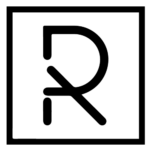Organization design
How to organize in the face of new challenges?
Organization design is a process for shaping the way a company works, to help pursue its strategies and objectives. It involves setting up structures and management systems and helping people adapt to new ways of working.
Structural changes are used to implement new strategies and to improve the efficiency and effectiveness of an organization. Structural change needs to consider both the individual/unit tasks, roles and responsibilities, and the coordination/cooperation practices between the parties.
Companies also have structures that go beyond the formal org chart. Design work is used to clarify the relationships between different structures. For example, how resources are managed in a company, how information systems support decision making, or how people’s workstations are positioned in the office.
Good design serves strategy and customer needs, is understood by people, and works in practice.
Rohjeta’s services in organization design:
We tailor all our services to fit our clients’ individual needs. Our services typically include:

Explore the cases!
The construction and real estate conglomerate had grown significantly in recent years. The company’s board and management saw the need to crystallize the company’s strategy in order to manage growth and focus resources on the right things.
Rohjeta assisted the company’s management in crystallizing choices about the business areas in which the conglomerate wants to continue participating, as well as the vision for new sectors and geographical areas into which it wants to expand.
During the work, it was also clarified what services the conglomerate offers and what is done in its subsidiaries. The key distinguishing factors of the subsidiaries were also identified.
Once the board approved the strategy, it was encapsulated into a clear visual form, making it easy to communicate to various stakeholders and to monitor its implementation. The strategy became a central management tool for the CEO of the conglomerate.
For a company in the energy and circular economy sector, an ambitious growth strategy had been defined. The company’s management considered it important that the strategy be broken down and concretized into everyday actions, so that everyone would have a common understanding of what it means and what its implementation requires.
Rohjeta facilitated a series of physical and virtual workshop meetings for the company’s leadership and managers, in which concrete focus areas were derived from the strategy.
Responsible persons, actions, and performance metrics were later defined for these areas. Actions were also assigned responsibilities, and the monitoring of metrics was agreed upon collectively.
After the executive team confirmed the results of the work, they were encapsulated into a progress plan and documented in a way that made them easy to communicate and their implementation convenient to monitor. The implementation of the strategy is regularly evaluated at predefined checkpoints.
A rapidly growing IT and technology company felt that its management system was no longer effective in the current situation. The company’s management deemed it necessary for an external party to analyze its management system and practices and present examples from other companies.
Rohjeta conducted extensive interviews with the company’s leadership and managers and organized workshop sessions to discuss the results of the interviews.
“Based on the results, management roles and responsibilities were redefined and reporting practices were clarified in collaboration with the company’s CEO.
Additionally, based on the interviews, a set of development areas were identified for which progress plans were created and responsible persons were appointed.
During the project, attention was also paid to the executive team’s work, and a new structure and operating model were created for it.
